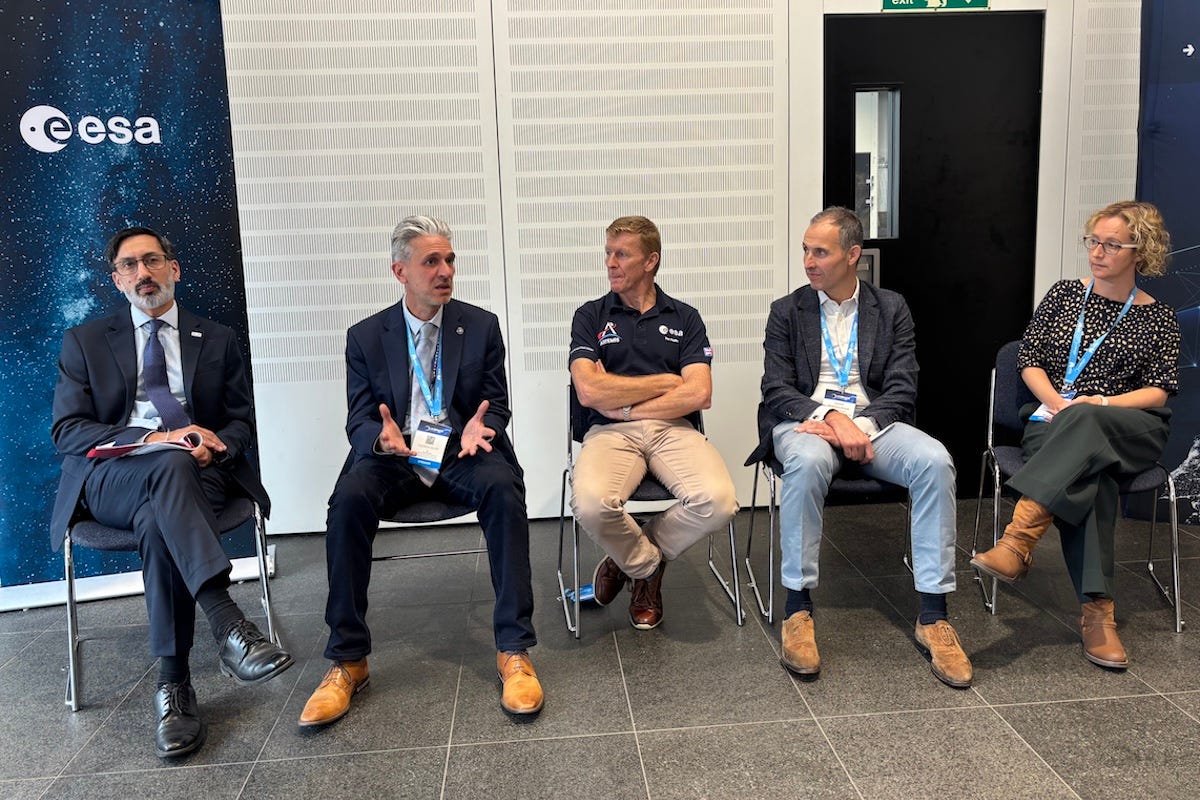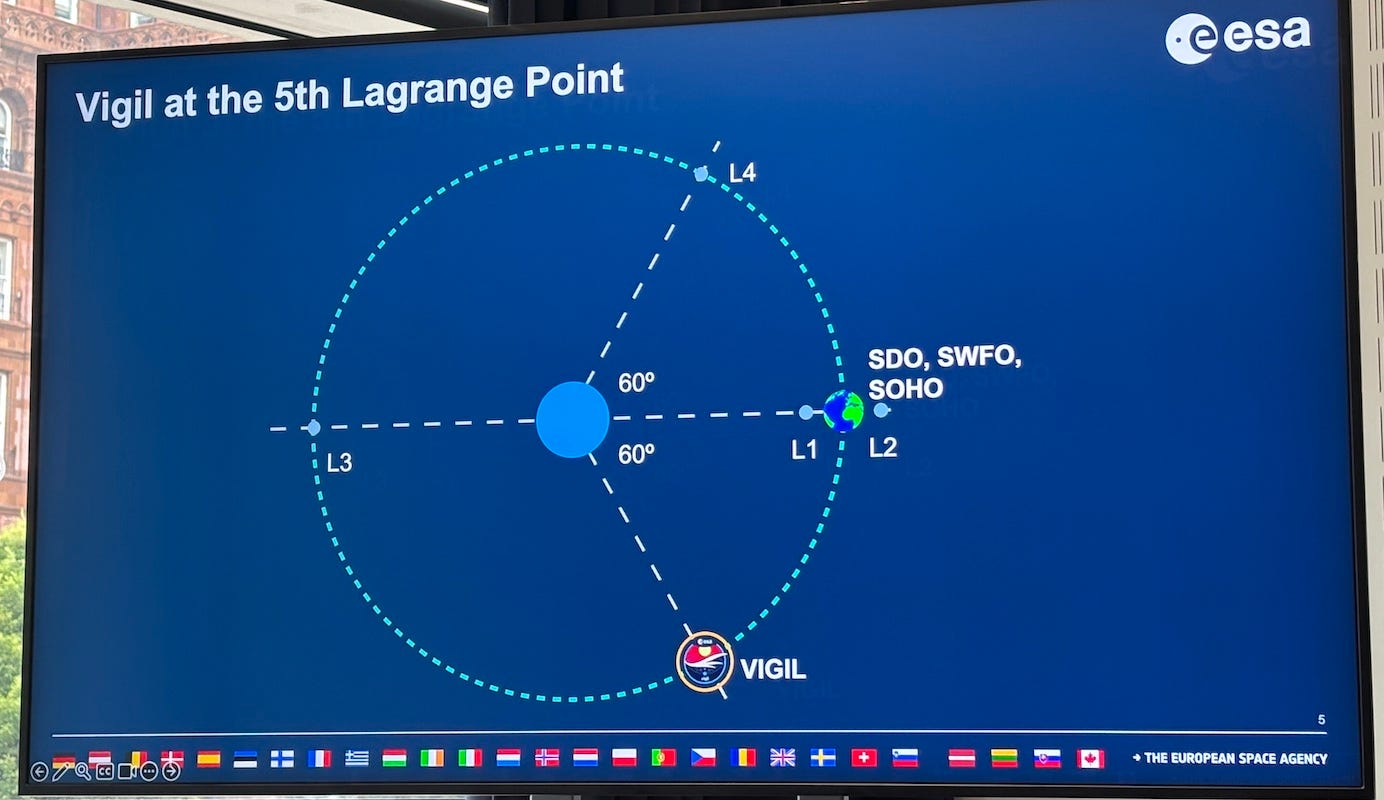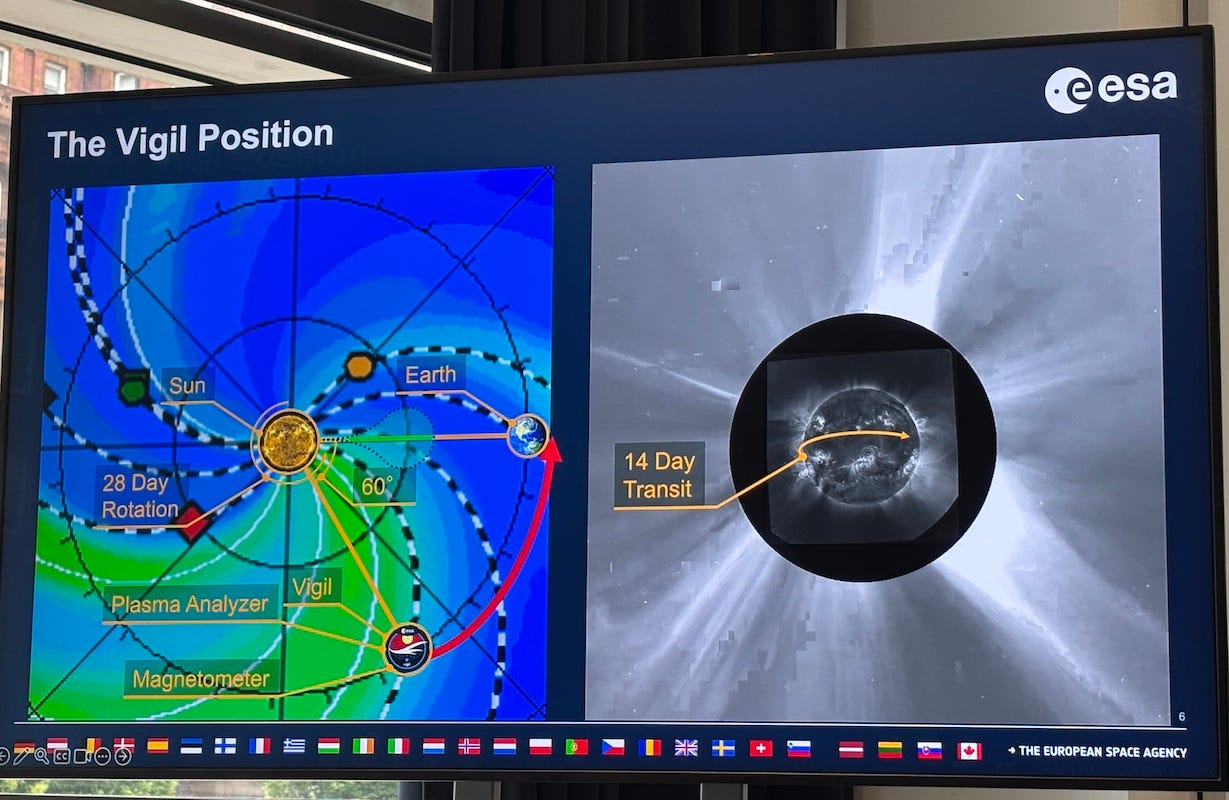ESA’s Vigil Satellite to Launch in 2031 for Real-Time Solar Storm Alerts
A European-led space weather mission aims to forecast solar storms days in advance to protect satellites, aviation, and power grids on Earth

Imagine a solar storm so powerful it knocks out satellite signals. The Global Navigation Satellite System (GNSS) fails. Aircraft are rerouted. Farmers lose automated tractor guidance. Stock exchanges pause. Emergency services face blackouts. In the UK alone, the economic toll could reach £1 billion per day.
To guard against such disruption, the European Space Agency (ESA) will launch Vigil in 2031—a first-of-its-kind operational space weather satellite. Stationed at the Sun-Earth Lagrange Point L5, Vigil will give Europe early warning of solar eruptions that threaten satellites, aviation, power grids, and digital systems that underpin daily life.
Designed to operate through the worst space weather events, Vigil will deliver continuous, low-latency data to Earth's forecasting centers. Its side-on view of the Sun will complement existing monitoring at L1 and represent a leap from scientific observation to operational resilience.
Why L5 Matters
“From L1, you see the CME [coronal mass ejection] coming head-on—it’s hard to judge how fast or where it’s going,” explained Giuseppe Mandorlo, ESA’s Vigil Project Manager. “At L5, you see it from the side. That lets us predict the speed, arrival time, and impact location with much greater precision.”
Mandorlo added that Vigil is being designed to remain online when other satellites might fail. “It must work through the equivalent of a solar hurricane. That’s the driving requirement. It’s more than a satellite—it’s a service platform for European resilience.”
Currently, space weather monitoring is performed using satellites such as SOHO (Solar and Heliospheric Observatory) and GOES (Geostationary Operational Environmental Satellites). Positioned at L1—a gravitational point between the Sun and Earth—these missions offer early detection of solar eruptions, but from a straight-on angle. Vigil at L5 will provide the side-on view needed for accurate forecasting.
SOHO and GOES have been instrumental, but are aging platforms. Mandorlo pointed out that many of these systems are operating beyond their intended life span and were never designed for continuous, operational use.
“Vigil is not a scientific demonstrator,” he said. “It’s an infrastructure mission, critical to how Europe manages risk.”
Building Operational Readiness
Alexi Glover, ESA’s Space Weather Service Coordinator, said Vigil moves Europe into a new era of preparedness.
“Existing assets are ageing and not designed to operate during severe solar events. Vigil is operational by design, offering continuity when it matters most,” she said.
Matthew West, ESA’s Vigil Mission Scientist, said: “With current instruments, we often wait five or six hours for downlinks. Vigil’s low-latency system allows for rapid data transfer, which means we can cut forecast errors from 24 hours down to two.”
He described the importance of frequent and accurate imaging.
“Our heliospheric imager will provide a persistent view of coronal mass ejections as they leave the Sun and evolve en route to Earth,” he said. “By tracking their trajectory and speed, we can better anticipate their potential impact.”
Harshbir Sangha, Director of Missions and Capabilities at the UK Space Agency, said: “Space weather is on the UK’s National Risk Register. Losing GNSS alone could cost our economy £1 billion every day. Our £160 million investment in Vigil is a strategic move to safeguard the systems we all rely on.”
Sangha added that the UK's resilience strategy includes modelling for rare but severe solar events—those that might occur once in a century.
"We can't afford to be complacent. We're dependent on satellites for navigation, communications, and critical services. Vigil is a key part of our national space strategy."
Engineering the Satellite
Michelle Sprake, Lead Systems Engineer on Vigil at Airbus Defence and Space, UK, described Vigil’s six instruments as “a hybrid toolkit for forecasting and real-time tracking.” Two sensors, developed in the UK, will monitor solar wind at the L5 location. Four imagers, sourced from across Europe and the US, will observe flares, sunspots, and CMEs as they evolve and travel toward Earth.
She explained how early indicators are crucial.
“By monitoring magnetic field changes and the build-up of energy in the Sun’s atmosphere, we can detect warning signs days in advance,” she said. “The combination of different wavelengths and vantage points allows us to capture the full lifecycle of a solar event.”
Sprake noted that the heliospheric imager, built in Italy, will maintain persistent tracking of solar eruptions after they leave the solar corona.
“These events don’t stay static—they evolve. Watching them continuously as they travel toward Earth is what makes Vigil unique,” she added.
The spacecraft is being built to withstand the very space weather it is designed to monitor.
“It’s engineered with hardened systems so it can survive and function during high-radiation events,” Sprake said. “You want your weather satellite to work during the storm, not after it.”
UK astronaut Tim Peake offered a perspective from low Earth orbit.
“Space weather isn’t just an abstract risk—it’s personal. When we pass through the South Atlantic Anomaly on the ISS, we’re exposed to more radiation. We avoid spacewalks during active periods,” he said.
Peake described how the effects are visible even without the use of instruments. “Every night, you see flashes behind your eyelids—galactic cosmic rays hitting your retinas. And our onboard cameras? They’re degraded after two years from radiation damage.”
He added that the aurora, while beautiful, signals dangerous conditions.
“It’s breathtaking to watch from orbit. But it also tells you the magnetosphere is working overtime. Missions like Vigil help us understand what’s coming and how to respond.”
Insurance and Government Risk
Denis Bensoussan, Head of Space at insurer Beazley, said: “A recent Lloyd’s of London report estimates global losses from a severe solar storm could reach $2.4 trillion over five years. It’s a systemic risk—not just to satellites but to power, telecoms, and transport.”
He noted that accuracy is essential for mitigation. “False alarms are costly. If you shut down a transformer unnecessarily, recovery can take days. Vigil gives us high-resolution, real-time data so that actions are justified and timely.”
Simon Machin, Space Weather Manager at the UK Met Office, said: “In major events, we escalate to COBRA and deploy to London. We did this during the May 2024 storm. With Vigil, our capability will be sharper and faster.” [COBRA, or Cabinet Office Briefing Room A, is a UK government crisis response mechanism.]
Machin emphasised the value of international cooperation. “We work closely with the U.S., and we’re tracking emerging capabilities in China, India, and South Korea. Vigil ensures that Europe is not just a data consumer, but a data provider.”
ESA expects Vigil to launch in 2031. The mission is part of a broader European commitment to develop autonomous capabilities in space weather prediction. This includes building ground infrastructure, data-sharing frameworks, and public-private partnerships to ensure that the warning data is not only collected but swiftly acted upon.
European nations, through ESA and national agencies such as UKSA, are also exploring how to utilize Vigil data to support civil aviation safety, energy grid management, and disaster response protocols.
A shared rocket would result in a 44-month cruise to L5, whereas a dedicated launcher could reduce the journey to approximately 14 months. ESA aims to initiate partial services en route once the spacecraft reaches a suitable viewing angle.
“This is not a one-off,” said Mandorlo. “We expect a Vigil II, III, and beyond. Multiple points of observation will help us build 3D models of solar activity—making our forecasts sharper, faster, and more accurate.”
He concluded, “With Vigil, we are not reacting to space weather—we’re anticipating it. Accurate data, real-time delivery, and international cooperation are the foundation of future resilience. This is how we protect infrastructure, economies, and human lives.”
The experts shared their insights during a press conference at the UK Space Conference in Manchester on July 17.







